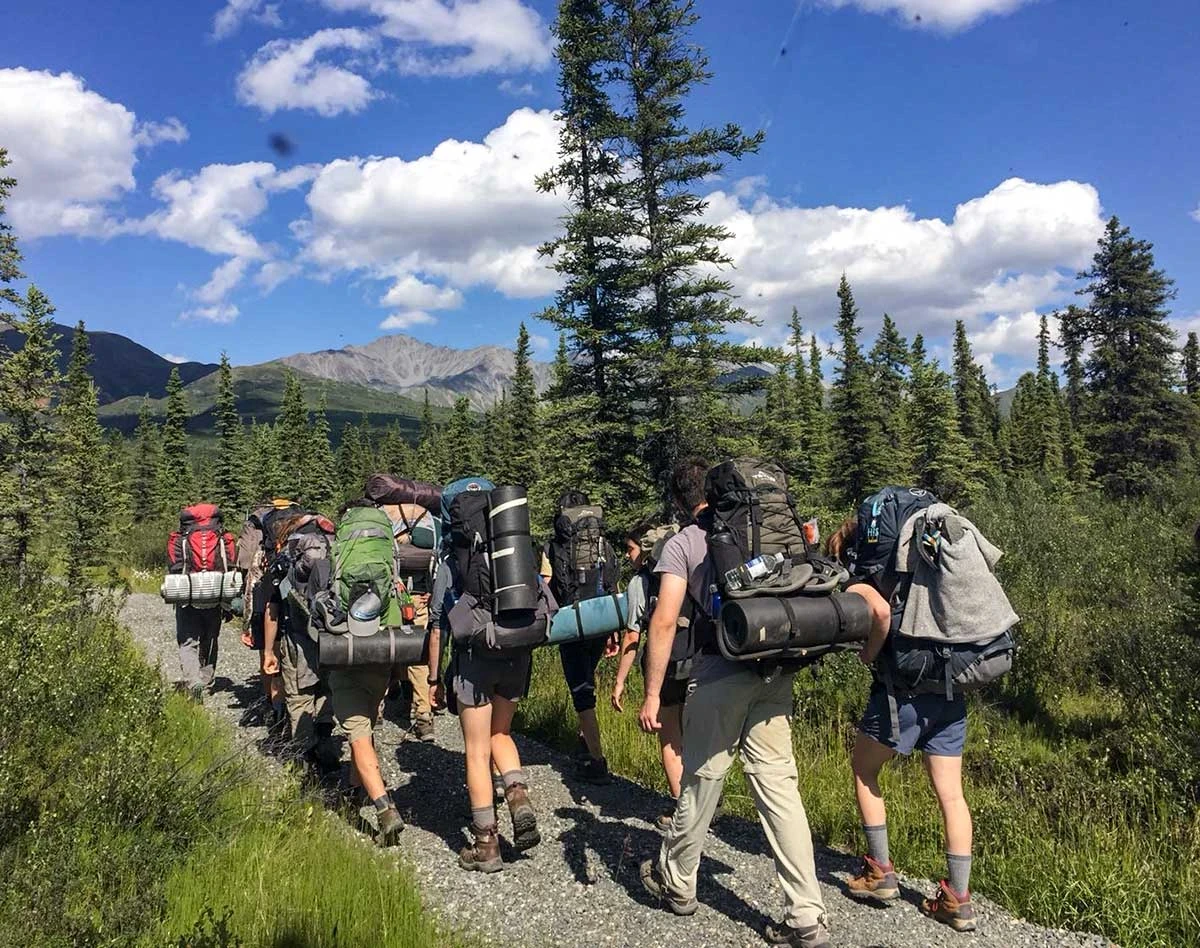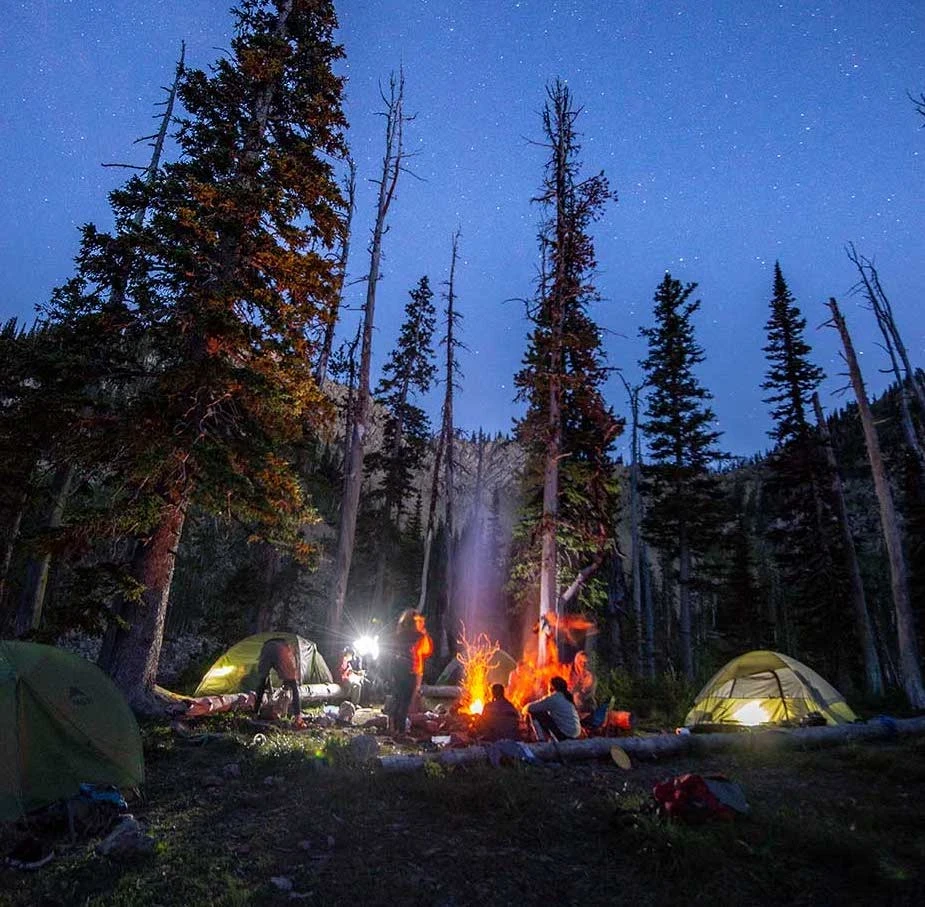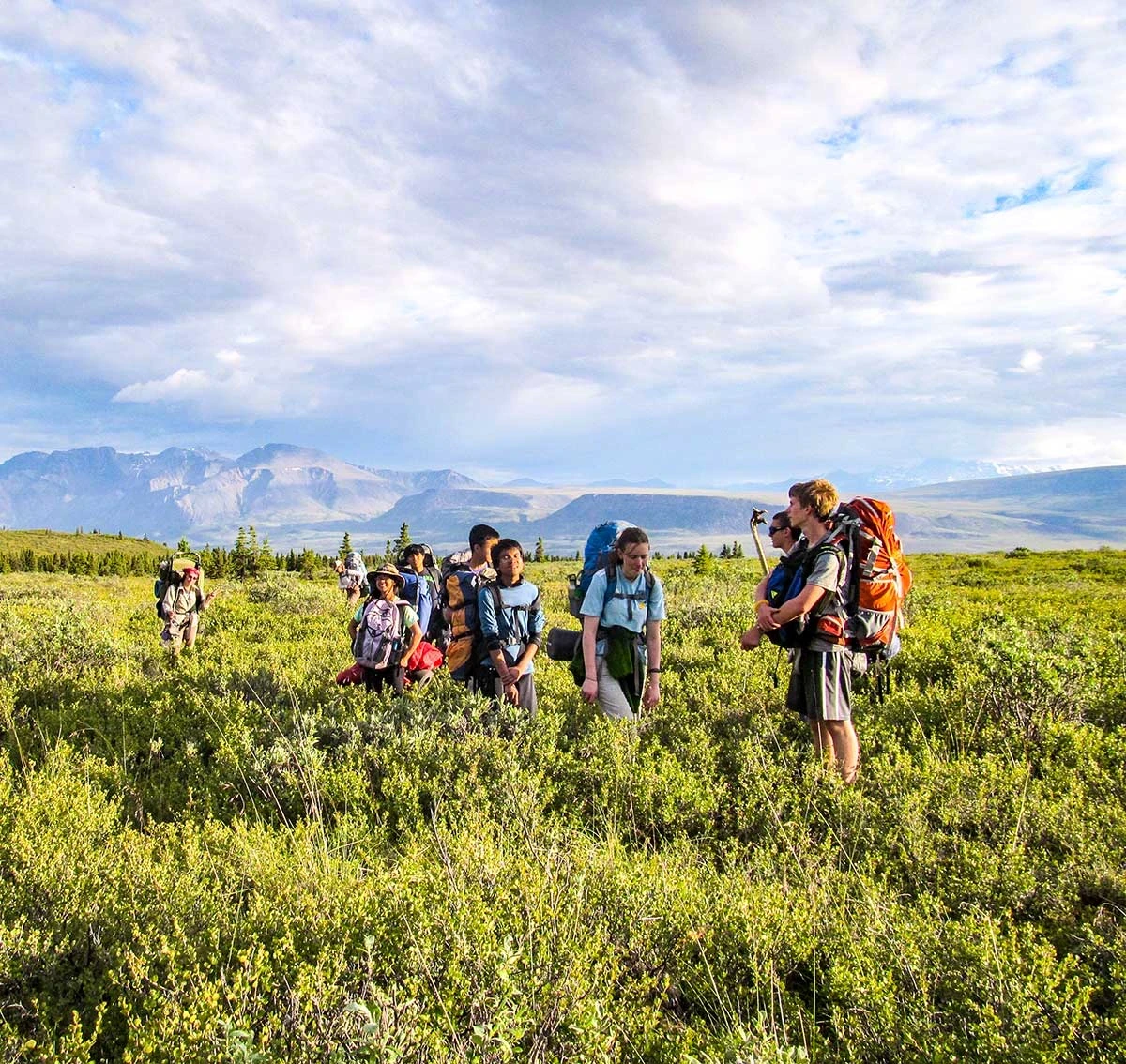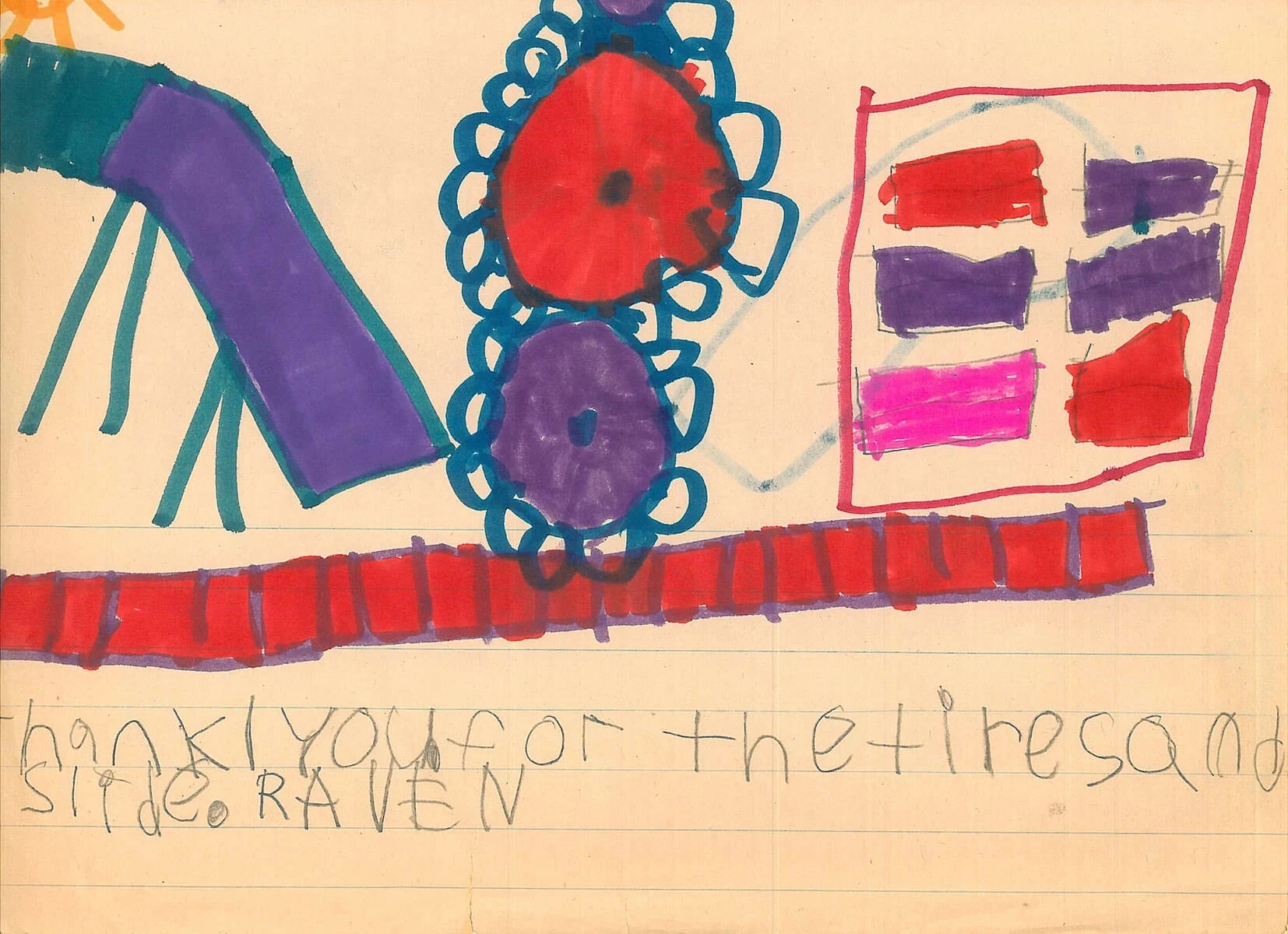
Here at VISIONS, outdoor gear and apparel is a necessity for almost all of our programs. We use outdoor adventure as a mechanism to get in touch with the natural spaces we love and to learn how to be better stewards of those natural spaces in the process.
However, it’s no secret that sustainability and the outdoor industry don’t always go hand in hand.
New outdoor gear and apparel isn’t just expensive. Much of the production is incredibly wasteful. The process of creating a piece of outdoor apparel, like any piece of clothing, has inherent environmental costs. According to the United Nations Environment Programme (UNEP), it takes 3,781 L of water to make a single pair of jeans, a process which equates to approximately 33.4 kg of carbon. That’s more carbon than the average jet plane pumps out in a mile (24 kg).
If a single pair of jeans emits that much carbon, think about the carbon output from those fancy The North Face jackets and KÜHL pants that you see worn on the trails each year…
The fact of the matter is, 85% of apparel ends up in landfills. That doesn’t just mean t-shirts and shorts from Urban Outfitters. It means all apparel, outdoor apparel included. Whether you’re looking for gear and apparel for your next VISIONS program or your own adventures, you want to make sure you’re doing it with as little impact as possible.
With that in mind, one important way we can be more sustainable is…
Shop for Used Outdoor Gear and Apparel!

I joined the VISIONS team quite recently, but have worked as an outdoor adventure journalist for my entire career, and before that spent my youth backpacking and climbing throughout the Deep South as a Boy Scout. I’ve worked as a contract writer for dozens of mainstream outdoor brands (which I won’t name here) but it’s safe to say that I’ve seen the waste that goes into outdoor apparel and gear firsthand, and as a result, the vast majority of the outdoor gear and apparel I buy is now used. Furthermore, not only is it the most sustainable method of sourcing your products, but it’s also much more affordable than buying new.
Here are a few options worth checking out before you pull the trigger on a new piece of outdoor-related merch.
Swap
Online thrift store Swap is an excellent place to search for outdoor apparel and clothes in general. I buy almost all of my clothes here. While Swap isn’t specifically catered towards outdoor apparel, you’ll find apparel from plenty of big-name outdoor brands on here, from Outdoor Research to KÜHL to Columbia. As I’m writing this, I’m looking at a Columbia rain jacket in “Like New” condition for only $15. You’re saving money and you’re avoiding contributing to the wasteful cycle of more production. What’s not to like?
REI Used Gear and Garage Sales
Outdoor gear giant REI hosts a vast catalog of used gear and apparel on their website. You can find just about anything under the sun here, and since REI is an outlet in addition to a brand, you’ll find gear and apparel from dozens upon dozens of outdoor brands from Columbia to Black Diamond to The North Face.
While they aren’t open during the pandemic, physical Garage Sales are another go-to spot for more technical outdoor gear and apparel. These sales are available only for REI Co-op members, but membership is $20 for life, so it pays off fast. Members also get credit in the form of REI gift cards when they trade in their used gear.
I once found an Osprey backpack (MSRP $300+) for a former girlfriend at an REI Garage Sale for only $60. It had a slight tear in the side, but I stitched that up in a few minutes, making the pack as good as new. The pack lasted for dozens of backpacking trips we took across the country. For all I know, she still has it.
Worn Wear
Patagonia’s Worn Wear program is an initiative to extend the life of used Patagonia gear and get it out to new consumers. Unlike REI’s used gear marketplace, however, you’ll only find gear from Patagonia on the Worn Wear website (nothing from other brands). That said, there’s a lot of stellar used gear and apparel to be found here, from packs to sleeping bags to down jackets.
GearTrade
GearTrade is another great option for finding used gear online. This massive online used gear marketplace has everything from apparel to ski and snowboard gear, climbing shoes, kayaks, mountain bikes, and more. This is a site that’s best for bigger purchases, as that’s where you’re more likely to see savings (and many sellers on here tend to overprice their items). There’s also no oversight here, unlike the used catalogs run by REI and Patagonia, but it’s a top-notch resource to have on hand.
Craigslist
It might sound surprising, but I’ve bought a ton of used technical outdoor gear on Craigslist for dirt cheap. My first pair of crampons came from Craigslist, as did my first ice axe and my first pair of mountaineering boots. I’ve sold tents, sleeping bags, motorcycles, and more on here, too.
Craigslist is a mixed bag, of course, and when there are online thrifting sites like Swap and REI’s extensive used apparel catalog out there, there’s simply no need to search for outdoor apparel on Craigslist. That said, if you’re looking for a particularly pricey piece of outdoor gear, like a tent or a sleeping bag, Craigslist can be a great place to start, and you’re almost guaranteed to find a better deal on here than you will on catalogs from REI or GearTrade if you play your cards right (Craigslist sellers are often outdoor novices who got in over their head and simply want to get rid of the expensive gear they bought).
Ask Around!
If you’ve busted your butt and worn out all other options, just ask around. Post on social media, text a few buddies. Heck, you can even send me an email! I sold one of my kayaks to someone who read an article of mine the other day.
If we’re striving to be sustainable consumers, we have an obligation to exhaust all options at our disposal before purchasing a new item and contributing to the harmful cycle of production and waste that comes with it.

No Luck?
There are other ways to stay as sustainable as possible when shopping used isn’t an option for whatever reason. As a mountaineer, a lot of the gear I deal with is simply not stuff that I can buy used, for safety reasons. You don’t buy used rope, helmets, or climbing pro unless you have a death wish.
Luckily, many brands and retailers like REI have implemented product impact and sustainability standards, so you can better understand the cost of production for any new gear or apparel you buy. Their website offers a variety of other resources, including advice on understanding recycled materials in outdoor products and an overview of the various sustainability standards they offer. We’ll discuss some of this stuff in coming blogs, so stay tuned!
So, what should I do when my gear is damaged or worn out?

Well, first of all, take a second look and consider if that gear is really damaged or if it’s just “worn.”
You shouldn’t mess around with items like climbing rope, for example. If gear like this, gear you have to stake your life on, is damaged, then you should throw it out immediately.
But plenty of other gear, from tents to shoes to clothes, can be refurbished. So…
Repair, Repair, Repair!
We’ll cover this more in a later post, but a wealth of information exists online covering how to repair and restore used outdoor gear and apparel. Outdoor repair brand GEAR AID offers a lot of information on the subject on their blog, and many retailers offer product-specific guidelines and tips, not to mention dedicated repair or refill services, oftentimes covered under warranty.
If you’ve exhausted all other options and do feel your outdoor gear or apparel has reached the end of its life, be sure to avoid throwing it into the dumpster at all costs. There are many programs like REI’s Garage Sales, Patagonia’s Worn Wear, Columbia’s ReThreads, and more, that allow you to trade in your damaged or used gear. Many of these will even give you store credit in exchange. Failing that, there are always thrift stores and Salvation Army drop boxes where it can get a second chance at life. The dumpster is never the answer.
Conclusion
In summary, shop used whenever possible. The resources above are excellent places to start your search, and I’m confident that if you try each option, you’ll find what you need before long. I’ve outfitted dozens of backcountry expeditions completely on used outdoor gear, and you can too!
When your gear wears out, first try to repair or refurbish it. If you are ready to get rid of a damaged or worn-out piece of gear or apparel, be sure to donate it to one of the options listed above so that it can be repurposed or find a new home.






